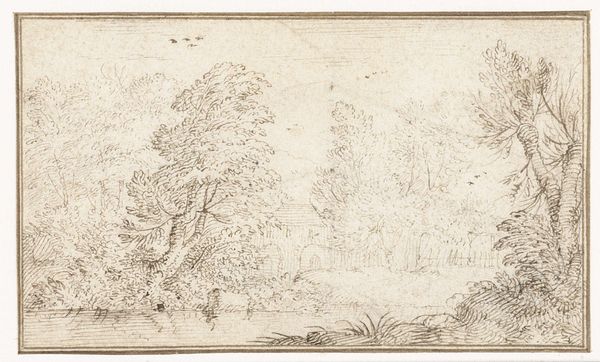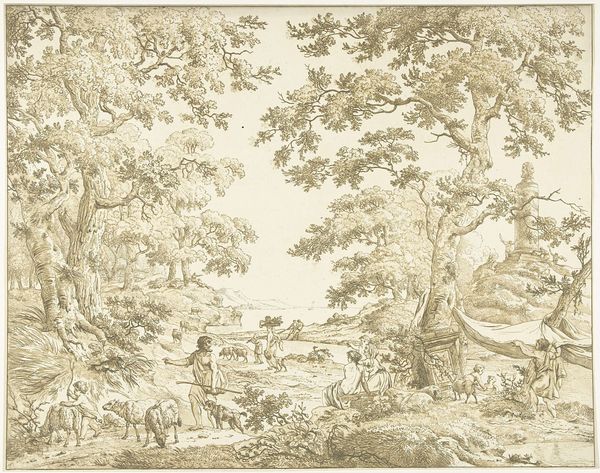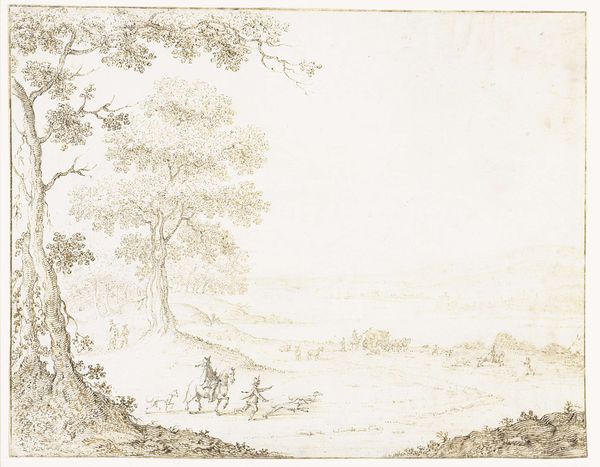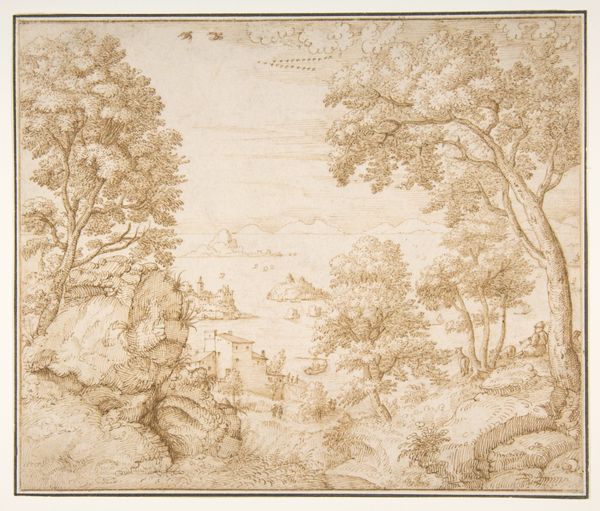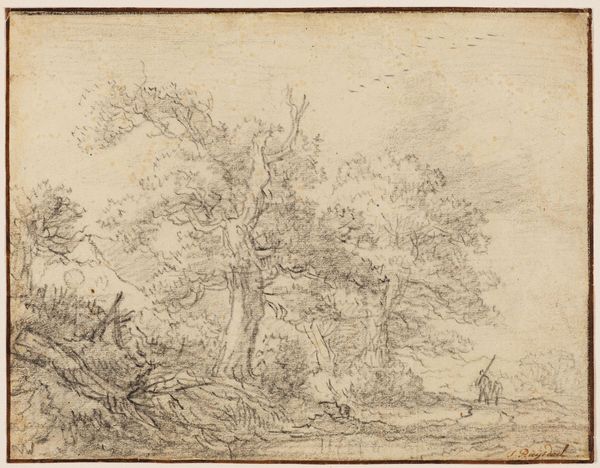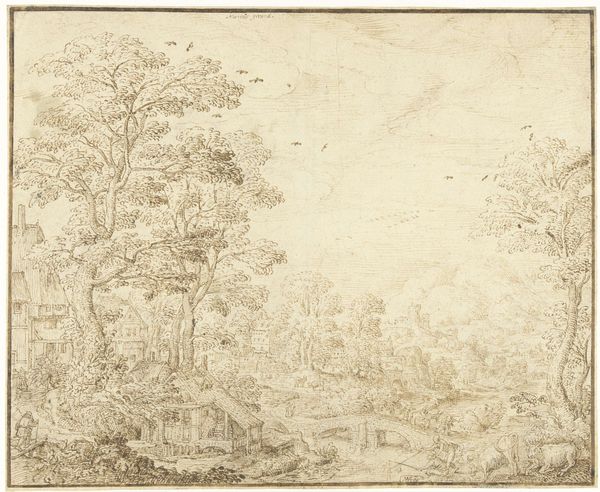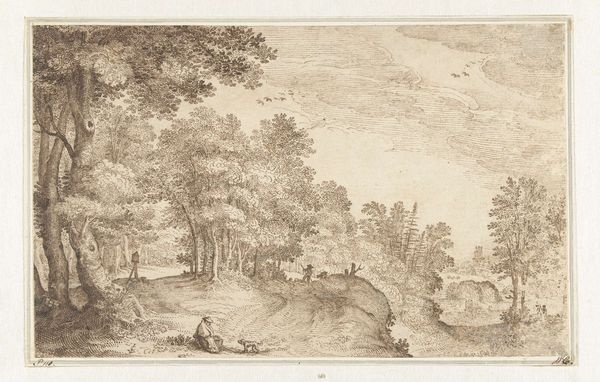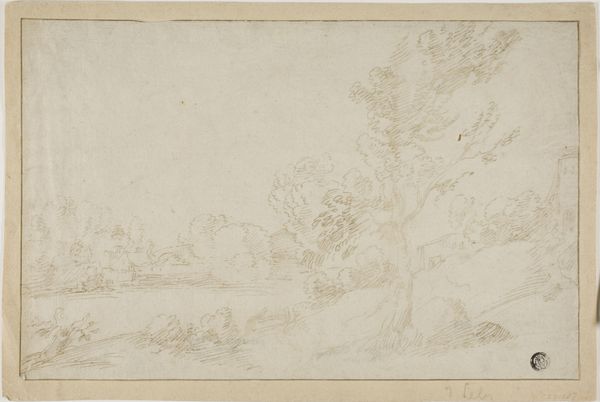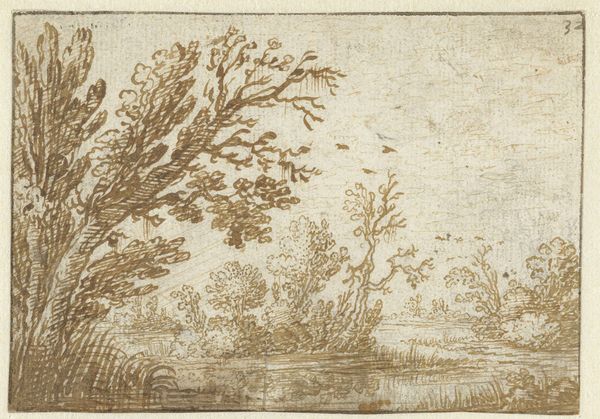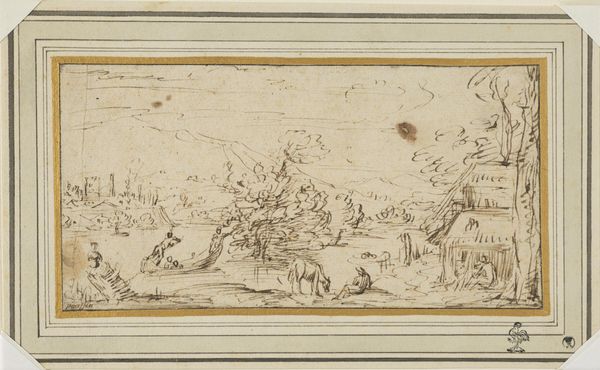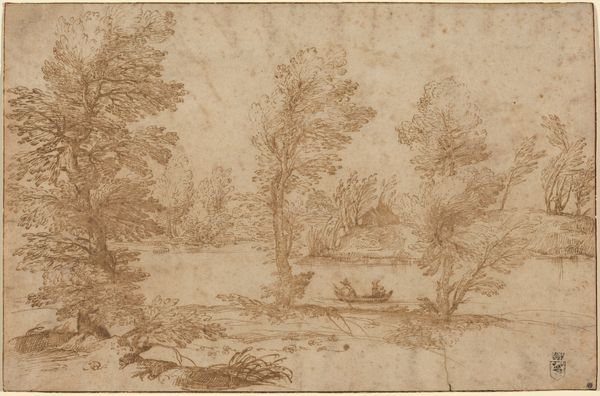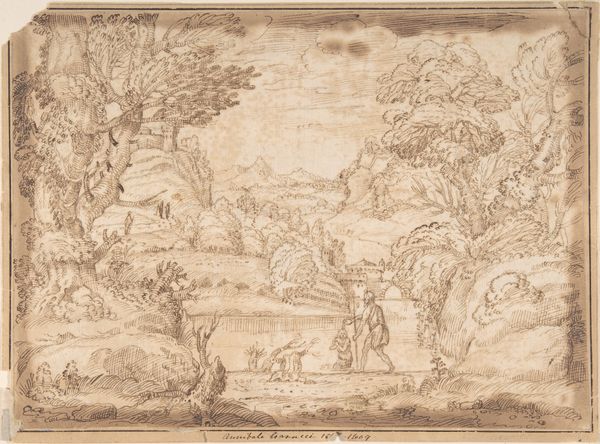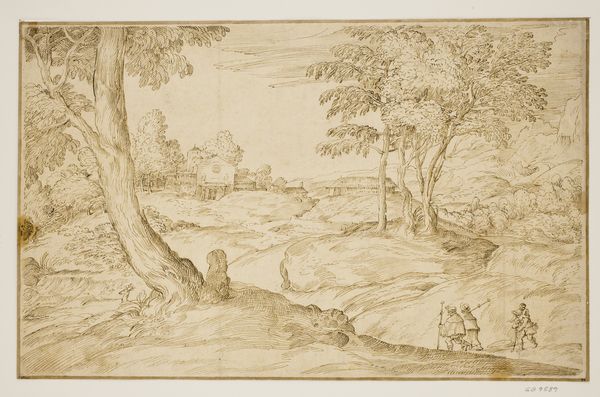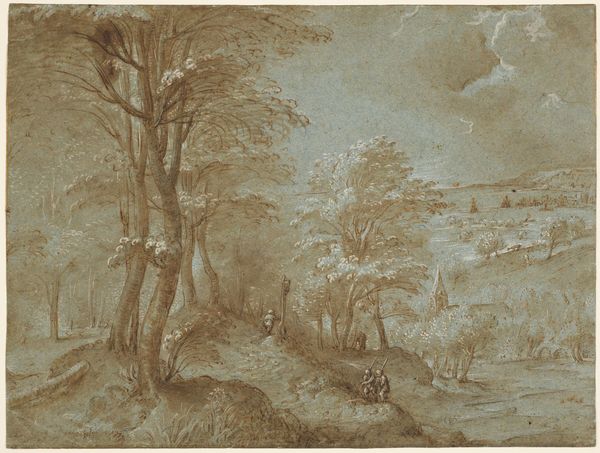
drawing, etching
#
drawing
#
narrative-art
#
baroque
#
etching
#
landscape
#
etching
#
line
#
realism
Dimensions: height 124 mm, width 207 mm
Copyright: Rijks Museum: Open Domain
Albert Flamen made this River Landscape etching in the 17th century, using a copper plate and etching tools. The etching process involves coating a metal plate with wax, drawing through the wax to expose the metal, and then submerging the plate in acid. The acid bites into the exposed metal, creating lines that hold ink. Flamen then wiped ink across the plate's surface, pressing paper against it to transfer the image. This method allowed for the creation of detailed and precise lines, capturing the textures of the landscape, from the delicate foliage of the trees to the rippling water. Etchings like these were popular during a time when the printing press was transforming how images were circulated. Making prints like this one required specialized labor and materials, fitting into the broader economic systems of the time. By considering the etching process and its historical context, we can appreciate how Flamen's landscape is not just a depiction of nature, but also a product of specific materials, techniques, and social conditions.
Comments
No comments
Be the first to comment and join the conversation on the ultimate creative platform.
